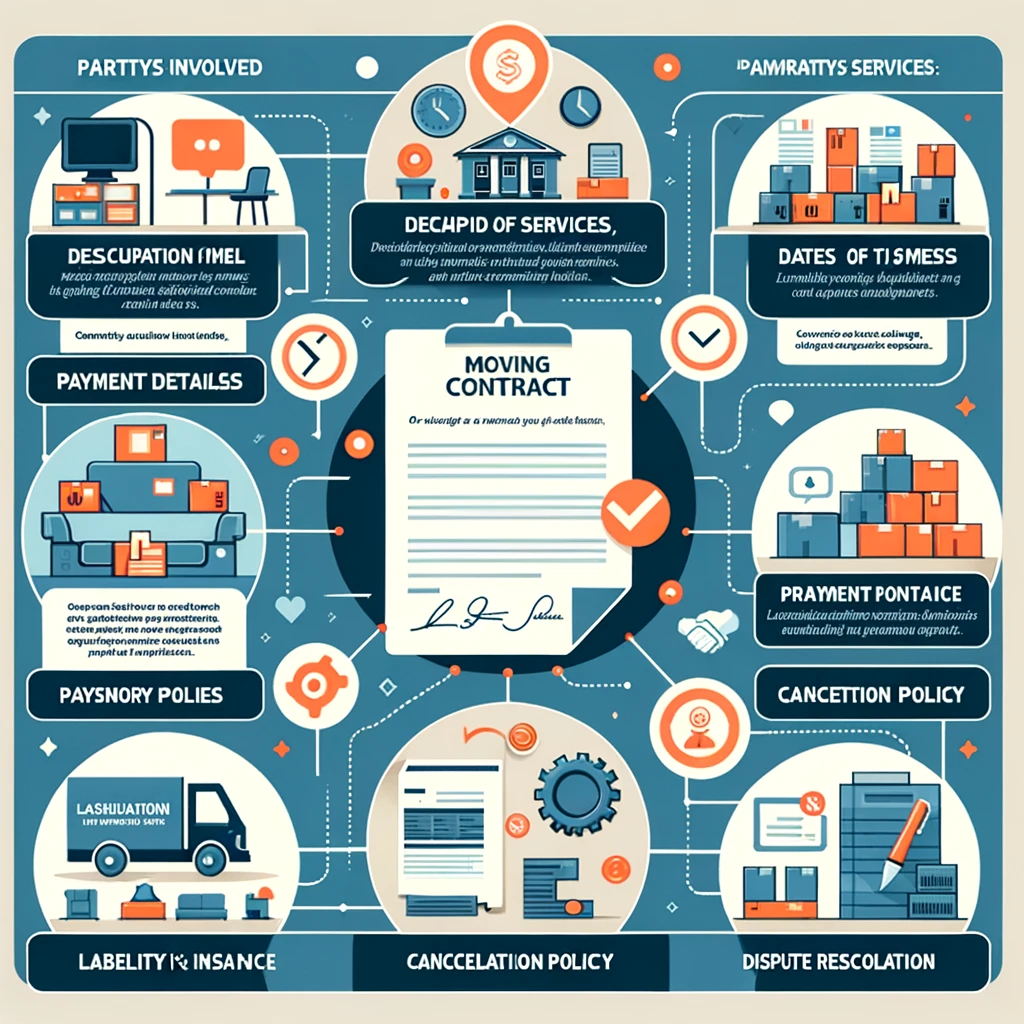The Ultimate Guide to Moving Contract Templates: Ensuring a Smooth Relocation
Moving can be one of the most stressful life events, whether it involves relocating a home or a business. The key to a smooth move lies in the details of the planning process, and at the heart of this process is the moving contract. A well-structured moving contract template not only clarifies the expectations and responsibilities of both the moving company and the client but also provides legal protection for both parties. In this comprehensive guide, we will delve into what a moving contract template should include, why it's crucial, and how to ensure you're fully protected during your move.

Introduction to Moving Contracts
A moving contract, also known as a bill of lading, is a legally binding agreement between a mover and a client that outlines the terms and conditions of the moving service. According to the Federal Motor Carrier Safety Administration (FMCSA), a division of the United States Department of Transportation, which regulates the moving industry, every moving company must provide a written estimate and a moving contract to its customers.
The Importance of a Moving Contract
The significance of a moving contract cannot be overstated. It serves as a legal document that:
Ensures clear communication between the moving company and the client.
Outlines the services to be provided, the cost, delivery timelines, and insurance coverage.
Protects both parties in case of disputes or damages.
Essential Elements of a Moving Contract Template
To create an effective moving contract, certain elements must be included to ensure clarity and legal compliance. Here's what a comprehensive moving contract template should cover:
1. Parties Involved and Contact Information
Clearly identify the moving company and the client, including contact information for both parties.
2. Description of Services
Detail the specific services the moving company will provide. This may include packing, loading, transporting, unloading, and unpacking.
3. Dates and Times
Specify the date and time of the move, including the expected delivery date. This ensures both parties are on the same page regarding timelines.
4. Payment Details
Outline the total cost, including the breakdown of charges such as hourly rates, flat fees, and any additional charges. Include payment terms and acceptable payment methods.
5. Liability and Insurance Coverage
Discuss the mover’s liability for damages and the insurance options available. The FMCSA provides guidelines on the levels of liability and insurance requirements for movers.
6. Inventory List
An inventory list of the items to be moved, often attached as an annex to the contract, helps track items and assess their condition before and after the move.
7. Cancellation Policy
Define the terms under which the contract can be canceled by either party, including any penalties or refunds.
8. Dispute Resolution
Outline the process for resolving disputes should they arise, including arbitration or mediation procedures.
Why Use a Moving Contract Template?
Using a moving contract template ensures consistency and comprehensiveness across all moving contracts. It also saves time and reduces the likelihood of leaving out critical details. Templates can be customized to suit the specific needs of the moving company and its clients, providing a solid foundation for every move.

Create & Review Your Contracts 10x Quality and Ease
Lawyer-level AI handles all your contract needs, with real lawyers providing safeguarding support

Ensuring Your Protection
To ensure full protection during your move, consider the following tips:
Research the Moving Company: Check the mover's credentials, reviews, and complaint history through the Better Business Bureau and the FMCSA's Protect Your Move website.
Understand Your Rights and Responsibilities: Familiarize yourself with your rights and responsibilities as a moving customer. The FMCSA offers a comprehensive guide for consumers.
Review the Contract Thoroughly: Before signing, review every detail of the contract. Ask questions if anything is unclear.
Document Everything: Keep a copy of the signed contract and any correspondence with the moving company.
Conclusion
A moving contract is a critical component of the relocation process, offering peace of mind and legal protection for both the moving company and the client. By understanding the essential elements of a moving contract template and ensuring that it is thoroughly reviewed and understood, you can safeguard your move against potential issues. Remember, knowledge is power, especially when it comes to navigating the complexities of moving services.
For more information on moving contracts and your rights as a consumer, visit the American Moving & Storage Association and the United States Department of Transportation's guidelines on moving.

